barlowrs
Explorer
Welp, this has been on my list for some time, and I have had all the parts, just never got off my butt to do it, so, finally a few weeks ago, I decided to. Mainly this is to protect me from getting stuck alone out in the middle of nowhere as I go out exploring by myself often, and always need to be back to work on Monday. One of the reasons I got a manual transmission was so I could push start it if I lose a batt, however, considering how much of a fat pig my truck is these days, that would be basically impossible alone, so this is the best option. This also allows me to connect both batteries when winching, or running my air compressor for a long time.
Also, with my flippac on the way (with Engel fridge), I figure now is a great time to have extra juice around. So, what did I need?
- Dual Battery Tray: I got the Columbia Overland one for cheap from Jeff (Jeff Wanamog here)..THANKS JEFF!!!
- Two Batteries: Luckily I was already running a Die Hard Plat. Group 35, for the second, I opted for a group 25, which is the exact same battery just with terminal backwards. This allows me to connect two batteries without have to cross them in an “X”
- Some form of isolator, whether just a mechanical switch, or a full blown smart setup like the National Luna. I opted for the Blue Sea 7622. This is a marine grade (always good) automatic charging system. This will automatically connect the batteries 30 sec after starting (this protects house battery from voltage spikes during start), then it will automatically disconnect them (isolate) when you shut off. In addition, it has a manual switch on the unit (See yellow knob below), to Connect, Disconnect, or set to auto as well as wiring and a switch for in cab operation (again, it is fully automatic though, the manual override switches are just when you manually want to do things). The thing that really sold me on this unit is that it is rated for 500 A continuous…that is HUGE (National Luna is like 250A I think). I like this as a HEAVY winch pull can run VERY high amps, and if I am running with batts connected, current is going through the blue sea, so I want it rated for more than the max current it can see.
- Lots of wire: I chose 3 gage stinger oval wire. This is more of a stereo shop wire, but I like it because it is very good at holding current and very flexible. It is high quality wire.
Ok without further ado, the write-up:
First off I warn anyone using Die Hard Plat batteries I used and the Columbia overland tray, they DO NOT FIT WITHOUT MODIFICTION!
First thing was to modify the batteries. The Die Hards have a lip on the bottom of them that make them just a wee bit too wide, so this needs to be taken off. You can see in the pic below it was cut off (A dremel, a pocket knife, and about 15 mins for both batteries).

Next was to modify the truck. The only interference I had was the foot of the fuse block mount. I simply cut it off (leaving enough meat for the original bolt to still serve a purpose)
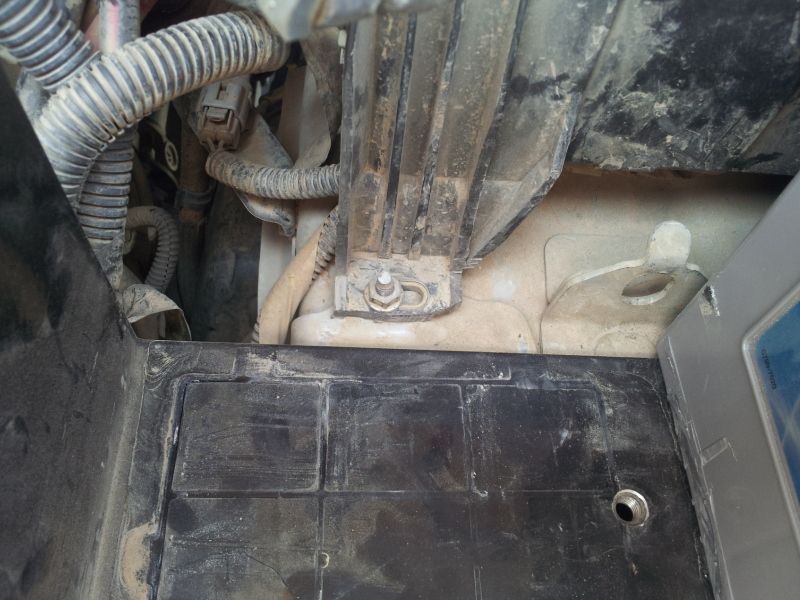
Next was to drop both batts in (notice the Die Hard 25 and 35 have the terminal right next to each other..very nice):
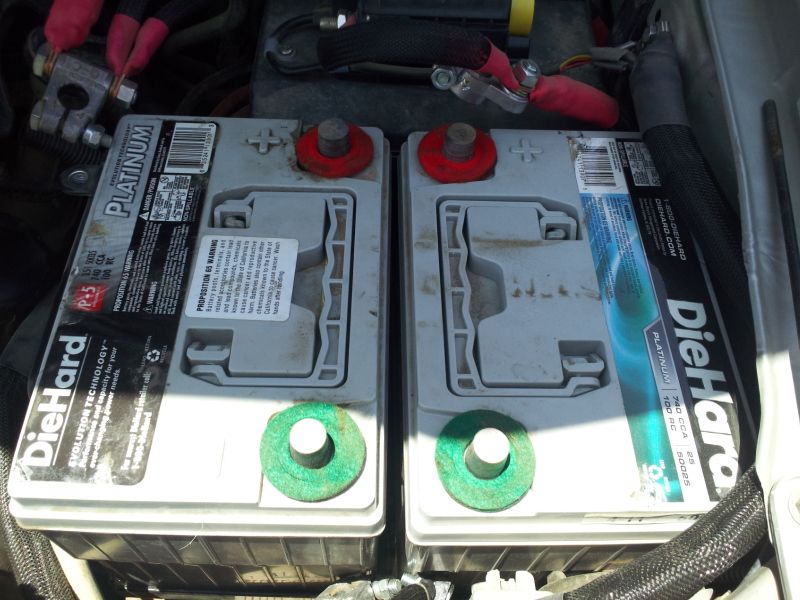
Then came time to mount the blue sea. You want it as close to the batteries as possible as the automatic functions operate off detecting voltage, so if you have it far away, there is voltage losses in the wires that may mess with the auto function. I mounted mine right to the lid of the fuse block:
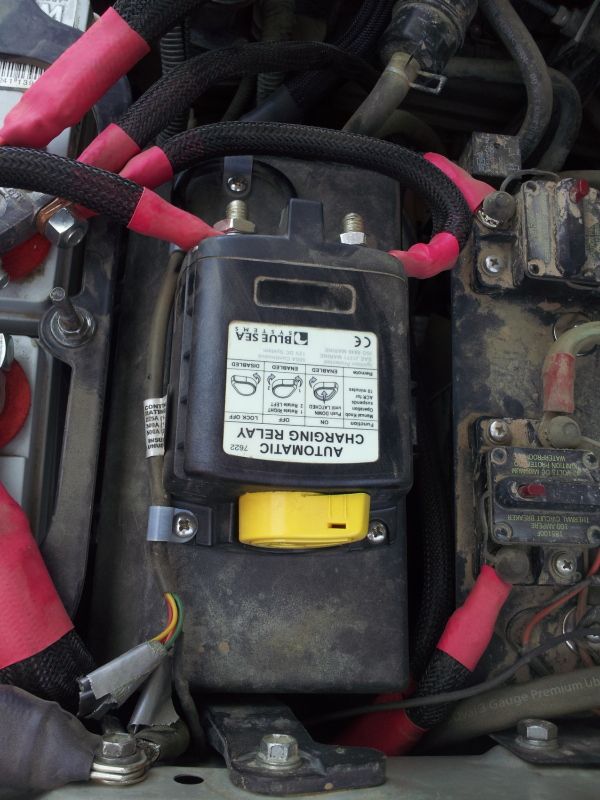
Mounting the battery hold down plate thingy majig took a bit of creativity. There was probably a better way to do this, but my way works so whatever haha. Columbia Overland supplies one long threated rod, which I used for the front of the batt tray, however the rear, I used the stock batt tray hook. Unfortunately it is too tall for the application, so after some measuring (eye balling), I cut it shorter and bent a new hook in the bottom. That hook then hooks into the hole in the tab seen in the pic above where I showed the fuse block foot.
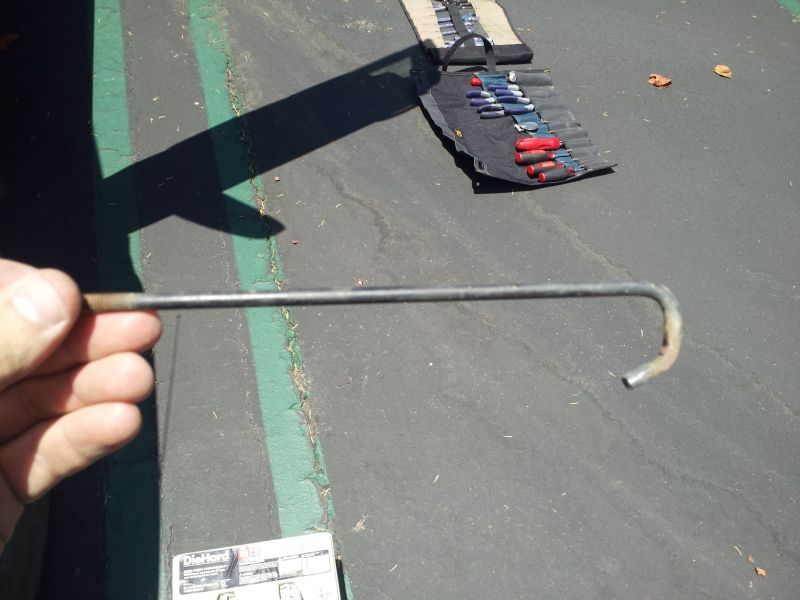
After that it’s just a matter of tightening everything down, and Wiring it all up…Viola
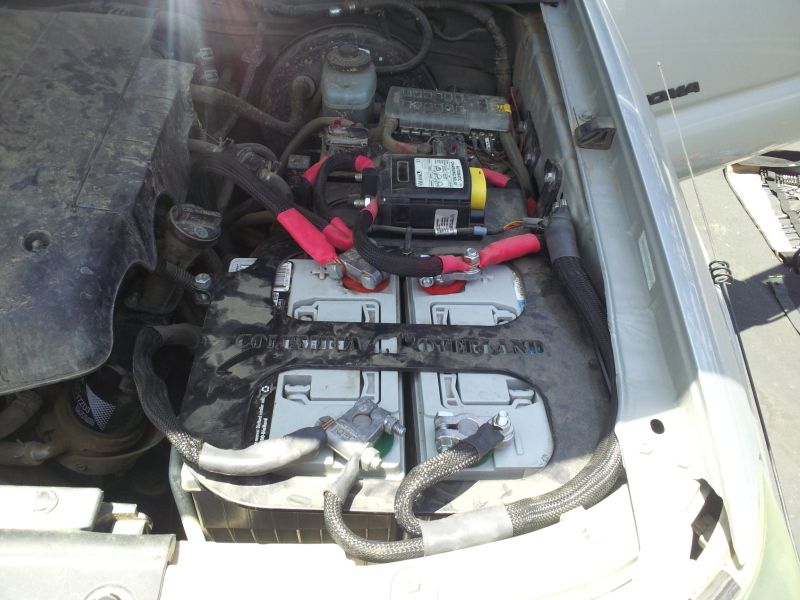
FYI, if you need to crimp 2 gage wire,. The crimper is STUPID expensive, however I discovered that at west marine, they have a “do it yourself” bench, that has a crimper..simply buy the fittings (ring terminals, etc) there, and use their crimper.
Also, with my flippac on the way (with Engel fridge), I figure now is a great time to have extra juice around. So, what did I need?
- Dual Battery Tray: I got the Columbia Overland one for cheap from Jeff (Jeff Wanamog here)..THANKS JEFF!!!
- Two Batteries: Luckily I was already running a Die Hard Plat. Group 35, for the second, I opted for a group 25, which is the exact same battery just with terminal backwards. This allows me to connect two batteries without have to cross them in an “X”
- Some form of isolator, whether just a mechanical switch, or a full blown smart setup like the National Luna. I opted for the Blue Sea 7622. This is a marine grade (always good) automatic charging system. This will automatically connect the batteries 30 sec after starting (this protects house battery from voltage spikes during start), then it will automatically disconnect them (isolate) when you shut off. In addition, it has a manual switch on the unit (See yellow knob below), to Connect, Disconnect, or set to auto as well as wiring and a switch for in cab operation (again, it is fully automatic though, the manual override switches are just when you manually want to do things). The thing that really sold me on this unit is that it is rated for 500 A continuous…that is HUGE (National Luna is like 250A I think). I like this as a HEAVY winch pull can run VERY high amps, and if I am running with batts connected, current is going through the blue sea, so I want it rated for more than the max current it can see.
- Lots of wire: I chose 3 gage stinger oval wire. This is more of a stereo shop wire, but I like it because it is very good at holding current and very flexible. It is high quality wire.
Ok without further ado, the write-up:
First off I warn anyone using Die Hard Plat batteries I used and the Columbia overland tray, they DO NOT FIT WITHOUT MODIFICTION!
First thing was to modify the batteries. The Die Hards have a lip on the bottom of them that make them just a wee bit too wide, so this needs to be taken off. You can see in the pic below it was cut off (A dremel, a pocket knife, and about 15 mins for both batteries).

Next was to modify the truck. The only interference I had was the foot of the fuse block mount. I simply cut it off (leaving enough meat for the original bolt to still serve a purpose)

Next was to drop both batts in (notice the Die Hard 25 and 35 have the terminal right next to each other..very nice):

Then came time to mount the blue sea. You want it as close to the batteries as possible as the automatic functions operate off detecting voltage, so if you have it far away, there is voltage losses in the wires that may mess with the auto function. I mounted mine right to the lid of the fuse block:

Mounting the battery hold down plate thingy majig took a bit of creativity. There was probably a better way to do this, but my way works so whatever haha. Columbia Overland supplies one long threated rod, which I used for the front of the batt tray, however the rear, I used the stock batt tray hook. Unfortunately it is too tall for the application, so after some measuring (eye balling), I cut it shorter and bent a new hook in the bottom. That hook then hooks into the hole in the tab seen in the pic above where I showed the fuse block foot.

After that it’s just a matter of tightening everything down, and Wiring it all up…Viola

FYI, if you need to crimp 2 gage wire,. The crimper is STUPID expensive, however I discovered that at west marine, they have a “do it yourself” bench, that has a crimper..simply buy the fittings (ring terminals, etc) there, and use their crimper.
